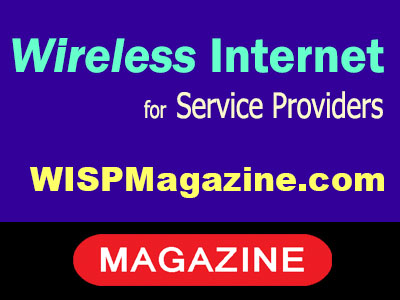By: Eric Slee
The need for reliable high-speed broadband access has become increasingly urgent, worthy of an all-of-the-nation approach. However, many rural communities continue to lack access to this critical service. Small-to-midsized Internet service providers (ISPs) are uniquely positioned to help close the digital divide in these underpopulated areas, but they face several challenges that hinder their ability to provide and expand service. Congress has an opportunity to address these challenges and empower these ISPs to expand broadband access in rural communities.
WISPA – Broadband Without Boundaries – serves and represents these entrepreneurial, community-focused ISPs. WISPA’s members include Wireless Internet Service Providers (WISPs) who utilize a diverse set of technologies, including fiber, to connect their neighbors. Many employ low-cost, flexible, marvelously evolutionary, and reliable, fixed wireless access (FWA) technology, as well. For this reason, WISPA supports a comprehensive and balanced approach to spectrum policy, one that promotes diverse use and technologies, while providing platforms for both small and large networks to offer appropriate solutions, where needed. As WISPs have proven over the years, they can connect the hardest-to-serve communities in the country, if given the necessary tools to do so.
NTIA Divergence
Even with access to valuable spectrum, deploying broadband in remote areas can be costly, which is why Congress dedicated billions of dollars in recent years to help solve this complex problem. One such program is the NTIA’s Broadband Equity, Access, and Deployment (BEAD) program. While initially promising in its scope, its implementation has proven challenging, on a number of levels. In particular, the NTIA has chosen to divert from Congress’ tech-neutral intent for the program, in the Infrastructure Investment and Jobs Act of 2021 (the “IIJA” is the statute that authorized the BEAD program), and instead will prioritize fiber projects, for access to deployment funding. NTIA also excludes from the program networks using entirely unlicensed spectrum to serve last mile locations, except in very limited circumstances, even if the network utilizes fiber or licensed spectrum elsewhere.
Importantly, a significant number of WISPs deploy broadband via unlicensed spectrum. Consequently, NTIA’s bias not only ensures such WISP networks will be overbuilt with taxpayer dollars — but funding meant for truly unserved areas will instead be diverted to already-established broadband markets. For this reason, WISPA encourages Congress to amend the IIJA, to make it more explicit that all technologies capable of delivering broadband services shall be allowed to participate. This approach will not only maximize limited support, by increasing the number of solutions available to bridge the digital divide, it will also help BEAD reach all Americans who could have broadband sooner, rather than years from now.
Thoughtful Taxation
Congress can further leverage recent broadband investments by exempting broadband grants from federal taxation. Unless changes are made, a significant percentage of BEAD and other federal broadband grants would be returned to the Treasury. This would significantly restrain efforts by America’s small ISPs, especially those working in rural, under-resourced, and Tribal areas, who need every dollar to ensure that the goal of universal broadband connectivity is properly met.
Thankfully, legislation was recently introduced to eliminate the taxation of certain broadband grants. WISPA wholeheartedly supports this effort, which currently applies to BEAD and American Rescue Plan Act (ARPA) dollars. WISPA is also advocating for similar treatment of grants awarded through other federal programs.
Poles and Other Infrastructure
Finally, Congress should remove barriers to entry for small ISPs, by promoting access to infrastructure, such as utility poles and rights-of-way, which would almost universally reduce the cost of deploying broadband infrastructure. Many WISPs are creative in the ways they deploy their networks, attaching their equipment to silos, grain elevators, water towers, etc. With greater access, however, to utility poles and rights-of-way, Congress can empower thousands of small ISPs to aid in the national objective of connecting all Americans quickly to broadband services.
In Summary…
In the near future, it is unlikely we will again see the levels of broadband funding such as the past few years, but by promoting meaningful access to spectrum, expanding and maximizing funding opportunities for all broadband providers, and supporting policies that promote competition and remove barriers to entry, Congress can ensure all Americans have access to reliable, affordable broadband internet. The time to act is now, and WISPA, together with our WISP and ISP members are excited to help Congress seize this opportunity to intelligently and rationally close the digital divide.
 Eric Slee is the Vice President of Government Affairs for the Wireless Internet Service Providers Association – WISPA and a former U.S. Senate staffer, with more than 10 years public and private sector experience.
Eric Slee is the Vice President of Government Affairs for the Wireless Internet Service Providers Association – WISPA and a former U.S. Senate staffer, with more than 10 years public and private sector experience.

